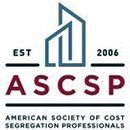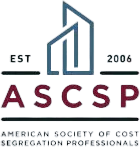Introduction to Cost Segregation

Have you ever wondered how property owners manage to boost their cash flow while reducing tax burdens? Cost segregation is a powerful strategy that may seem intricate but essentially simplifies the financial management of your property assets. This guide will show you the tangible benefits, and provide insights on how even those new to property management can make this tactic work to their advantage.
What is Cost Segregation?
Cost segregation is a tax savings strategy that allows property owners to accelerate depreciation deductions, thereby reducing taxes owed in the short term. This practice involves identifying property components and their costs, and classifying those components into categories that allow for accelerated depreciation periods. Essentially, it means breaking down your property investment piece by piece to identify opportunities to speed up depreciation on certain parts.
This process involves identifying all property-related costs that can be depreciated over shorter tax life periods—typically 5, 7, or 15 years—rather than the standard 27.5 or 39 years. By doing so, property owners can significantly increase their upfront tax deductions, which in turn boosts cash flow.
The scope of cost segregation extends from the moment of purchasing or constructing a property, including renovations and expansions, making it a versatile tool in property management.
Types of Properties Involved
Cost segregation can be applied to a wide variety of property types, each benefiting from accelerated depreciation in different ways. Some of the most common properties include:
- Commercial buildings: Office spaces, shopping centers, and industrial facilities.
- Residential rental properties: Apartment buildings and multi-family homes.
- Specialized facilities: Hotels, restaurants, and medical centers.
- Renovated or expanded properties: Upgraded or expanded facilities, which can also benefit from reclassification of the original building components.
This diversity in applicable properties makes cost segregation a valuable tool for nearly any property owner looking to enhance their investment’s financial performance.
How Cost Segregation Works
A cost segregation study is typically conducted by tax professionals or engineers who specialize in this area. The process involves a detailed examination of all aspects of a property to identify elements that can be depreciated over shorter periods. This typically includes a site visit where the expert inspects, photographs, and documents various components of the building.
The findings are compiled into a detailed report that categorizes assets into property classes such as 5-year, 7-year, and 15-year life spans, based on IRS guidelines. These classes correspond to different types of assets such as personal property or land improvements, which can depreciate faster than the building structure itself, set at 27.5 or 39 years.
Key Components
Key components in a cost segregation study include:
- Personal Property: Items such as furniture, fixtures, and equipment that are not a structural component of a building. These can often be depreciated over 5 or 7 years.
- Land Improvements: These include sidewalks, landscaping, parking lots, and other modifications outside the main building structure, typically depreciated over 15 years.
- Building Components: Components like walls, windows, roofs, HVAC systems, and plumbing are generally depreciated over the life of the building unless specified otherwise in the study.
Identifying these components accurately is crucial for maximizing the tax benefits through faster depreciation.
Role of Experts
Hiring experienced professionals ensures that the study complies with IRS requirements, minimizing the risk of errors and potential audits. These experts not only have a deep understanding of tax laws and engineering but also stay updated with IRS regulations and court rulings that can affect depreciation schedules.
Their expertise can also identify more components that qualify for rapid depreciation, which can significantly impact the property's net cash flow.
Benefits of Cost Segregation
Tax Benefits
One of the primary advantages of conducting a cost segregation study is the significant tax savings it can generate. By accelerating depreciation, property owners can reduce their taxable income in the early years of property ownership. This front-loaded depreciation allows for substantial tax deferrals, meaning more money is available for reinvestment or other uses sooner rather than later.
For example, shifting $1,000,000 in costs from a 39-year depreciation schedule to a 5-year schedule can save hundreds of thousands in taxes over the first few years post-study, depending on the tax rate applied. This strategy is particularly beneficial in years with high income, as it can substantially reduce the tax burden for that period.
Improved Cash Flow
Improved cash flow is a direct result of the tax savings provided by cost segregation. With less cash going out to taxes in the initial years after a property purchase, investors and owners find themselves with increased liquidity. This additional cash can be critical in covering operating expenses, funding property improvements, or investing in new opportunities. Essentially, cost segregation can turn a property into a more profitable investment sooner than anticipated by optimizing cash flow.
Long-term Financial Planning
Cost segregation also plays a vital role in strategic financial planning. While the immediate benefits are clear, the strategy also influences long-term financial outcomes. By accelerating depreciation, the overall lifecycle cost of the property is better managed. Furthermore, when planning for future renovations or disposals, understanding the adjusted basis of the property can lead to more informed decisions that optimize financial returns.
Additionally, cost segregation can align with estate planning or business succession plans by providing detailed asset values and depreciation schedules, which are useful for evaluations and future tax planning.
Implementing Cost Segregation
Implementing cost segregation effectively requires understanding the best timing for a study, choosing the right experts, and evaluating the cost against potential benefits. This section provides guidance on each of these critical steps to ensure that property owners can maximize the advantages of cost segregation.
When to Conduct a Study
The timing of a cost segregation study is crucial for maximizing its benefits. Ideally, the study should be conducted:
- After Purchasing or Constructing a Property: As soon as a property is acquired or completed, a study can help accelerate depreciation deductions from the first year.
- After Major Renovations or Expansions: Significant improvements can alter the depreciation schedules, making it a suitable time for a new study.
- Prior to Selling a Property: Understanding the detailed asset values can aid in better pricing and tax strategies upon sale.
It's also possible to conduct a "look-back" study for properties acquired or improved in previous years. This allows property owners to claim missed depreciation deductions by filing an IRS Form 3115 (Application for Change in Accounting Method) without amending past tax returns.
Finding the Right Expert
Selecting the right consultant or firm is vital to the success of a cost segregation study. Here are some tips for choosing a qualified professional:
- Look for Specialized Experience: Choose professionals who specialize in cost segregation and have a track record with properties similar to yours.
- Verify Credentials: Ensure that the firm or individual has the necessary credentials, such as certifications in tax accounting or engineering specific to cost segregation.
- Seek Recommendations: Ask for references or case studies from previous clients to understand their experience and results.
Expected Costs vs. Benefits
The costs of conducting a cost segregation study can vary widely depending on the complexity and size of the property. However, they are generally justifiable by the potential tax savings. Typical cost segregation study expenses might range from a few thousand to several tens of thousands of dollars, yet the tax benefits can be significantly higher. For example:
- Immediate Return: For every dollar spent on a study, property owners often see multiple dollars in tax savings within the first few years.
- Long-term Savings: The cumulative benefit of accelerated depreciation can far outweigh the initial costs over the lifespan of the property's use.
To decide whether a cost segregation study is financially viable, property owners should consider conducting a preliminary analysis with a qualified consultant who can provide an estimated benefit-to-cost ratio based on your specific circumstances.
Key Takeaways
Throughout this blog, we've explored the intricate yet highly beneficial process of cost segregation. We've highlighted its ability to reclassify property components for accelerated depreciation, which in turn leads to substantial tax savings and improved cash flow. We also discussed the optimal timing for conducting studies, how to select the right experts, and the cost-benefit dynamics involved.
- Cost Segregation Definition and Scope: A strategic tax planning tool that allows for accelerated depreciation on property components, reducing tax burdens significantly in the early years of ownership.
- Process and Importance of Experts: Conducted by professionals, these studies require detailed analysis and expertise to ensure accuracy and compliance with tax laws.
- Financial Benefits: Including immediate tax savings, enhanced cash flow, and long-term financial planning advantages, making cost segregation a vital strategy for property owners.
If you’re ready to explore how cost segregation can benefit your property investments, we encourage you to evaluate your properties for potential cost segregation studies. A great way to start is by consulting with a member of the American Society of Cost Segregation Professionals (ASCSP).
Take the next step towards optimizing your property’s financial performance today. Explore the possibilities with a qualified professional and harness the power of cost segregation to enhance your investment returns!
All Rights Reserved | ASCSP
Powered by AutomationLinks
All Rights Reserved | ASCSP | Powered by AutomationLinks




